America is mourning the loss of heroic Supreme Court Justice Ruth Bader Ginsburg, a tenacious dissenter and contemplative jurist. Her legacy is one of intellect and dignity, courage and democracy. A champion for gender equality, America is a fairer, more equitable place for all its citizens because of Justice Ginsburg’s contributions. “Equal justice under law” is written and a phrase engraved on the West Pediment on the Supreme Court Building, and Justice Ginsburg embodied these words.
Inspired by her legacy, Americans will use their voices to shine light into these dark times.
Welcome back to Week 23 in my weekly reports analyzing the Covid-19 pandemic and its effects on the country and higher education, and welcome to our new subscribers! For those of you reading this on my blog, Off the Silk Road, I have also launched a newsletter, where these reports can be sent directly to your email each week. Click here to subscribe.
Last week, we unpacked stunning new revelations in Bob Woodward’s book and examined new college outbreaks as they become the nation’s newest hotspots. This week, we will take a look at some of the most dangerous new developments in the history of American public health and check in on the latest outbreaks on college campuses across the country.
A national look
200,000. According to a count by NBC News, the U.S. has passed 200,000 recorded deaths from the coronavirus. In May 29’s newsletter, we discussed our numbness to the numbers: “Behind each figure is a name. Somebody’s family member. Friend. Colleague. Loved one. These are Americans that have lost their lives and their futures. Many of these deaths were avoidable. This fact is a wound our nation will live with for years to come.” The nation should pause this weekend to acknowledge an American tragedy. It didn’t have to be this way, and it still doesn’t have to be this way.
We know a national plan, at least in the form that is needed, is not going to come. It is up to us, the American people, to change the way we live our lives to slow the spread of the virus. The facts are that we have been living with this for the past six months and it is likely to be around another year, until the vast majority of Americans will be able to get the two required doses of a vaccine. In a wide-ranging piece on the fall and winter, The New York Times’ Jeneen Interlandi urges Americans to prepare for a possible resurgence: “As localized outbreaks are detected, shutdowns will be needed. Restrictions on everything from nursing home visits to haircuts to large indoor gatherings will have to be implemented.” We need to start making plans now for this fall and winter surviving a virus whose long-haul complications we still do not fully understand. This includes mass vaccination for the flu, continuing to protect the most vulnerable and following the advice of trusted health experts.
America is facing a crisis in trust: trust in our leaders, trust in our public health organizations and trust in the contact tracing process. I would argue that this was one of the worst weeks in the history of American public health. Just this week:
- A top HHS official pushed bizarre conspiracies and warned of an armed revoltafter the election. “The C.D.C., he said, was riddled with anti-Trump researchers who ‘walk around like they are monks and ‘holy men’ but engage in ‘rotten science.'”
- The White House blocked a plan by the USPS to send 650 million cloth masks to every American household in April.
- HHS officials pushed testing guidance past the CDC, ignoring scientific review (and was subsequently reversed on Friday).
- In Trump’s final call with Bob Woodward, he said “Nothing more could have been done” in his response to the virus.
Each one of these developments is more shocking than the last. It is hard to imagine how many lives could have been saved if any one of these went differently, particularly with the reports of the USPS drafting a press release of sending millions of masks to Americans in April, which the White House subsequently blocked. This all comes as American patriot and former coronavirus task force aide Olivia Troye has come out against the president, saying that “President Trump’s response to the coronavirus pandemic showed a ‘flat out disregard for human life’ because his ‘main concern was the economy and his reelection.’”
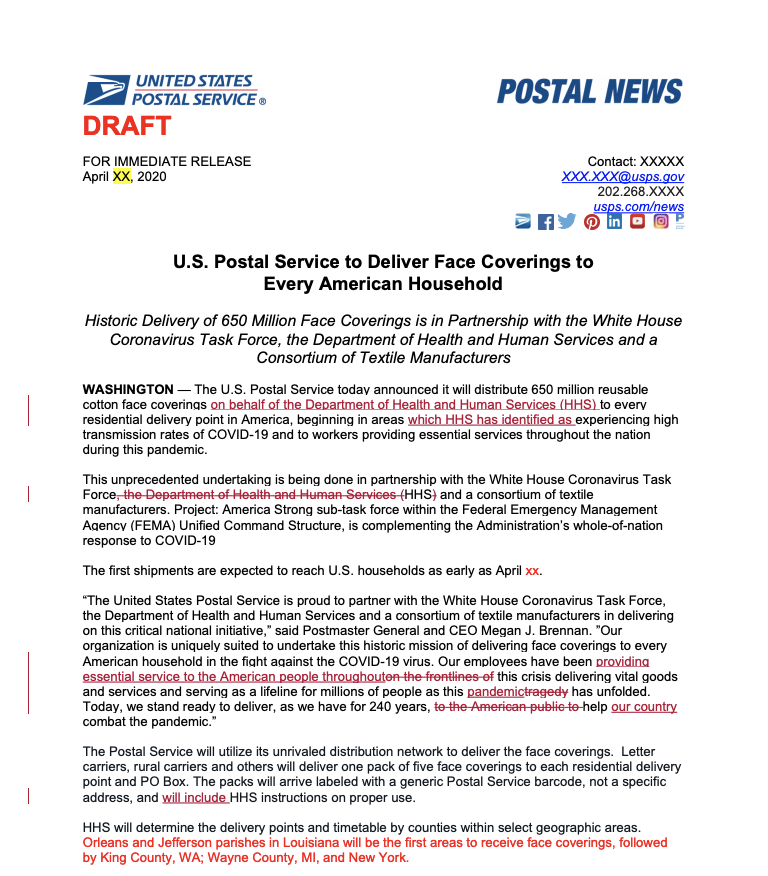
America is, once again, facing a testing crisis of epic proportions. In addition to not having a national strategy to count antigen tests, leaving potentially many tests uncounted, the U.S. is simply not conducting enough tests. In a report last week published by the Rockefeller Foundation, researchers used new cases per 100,000 residents in each county to determine thresholds. Calculating the number of tests needed in schools and nursing homes, they estimate the number of tests needed per month in specific national scenarios based on new cases in the U.S.


So where are we now? This pie chart shows the percentage of the U.S. population in each of the four “zones” based on new cases in the last seven days. This map shows the same data on a county level. Right now we are most similar to Scenario A.
According to Scenario A, we need 193 million tests per month. To put that in perspective, since the pandemic began, the U.S. has only conducted 88,574,524 tests, according to the COVID Tracking Project. To accomplish any scenario outlined in the report would require exponentially more tests than any current testing plan. The federal government needs to step up and coerce companies into mass producing antigen tests. While the White House did sign a deal for 150 million rapid Abbott tests, there is a lack of clear guidance on where to use them and these tests will not be enough.
Let’s take a look at some of the latest scientific developments:
- A model predicts that moderately efficacious masks that reduce transmission risk by 50% will lower exposure viral load 10-fold among people who do get infected, potentially limiting infection severity.
- A note in The New England Journal of Medicine says that universal masking could become a form of “variolation” that would generate immunity and thereby slow the spread of the virus in the United States and elsewhere, as we await a vaccine.
- “Overconfidence in national specialness has led to lack of preparedness, prevented collaboration with global health agencies and limited opportunities to learn from the experience of other countries,” a new study published in Nature concludes on the role of hubris in nations’ pandemic responses.
- According to a CDC report on 121 deaths from Covid-19 among people under 21, Hispanic, non-Hispanic Black and non-Hispanic American Indian/Alaskan Native persons accounted for 94 (78%) of these deaths.
- A study published in the Proceedings of the National Academy of Sciences showed that American governors’ recommendations for residents to stay at home (such as on Twitter) preceded stay-at-home orders and led to a significant reduction in mobility comparable to the effect of the orders themselves. Political partisanship influences citizens’ decisions to voluntarily engage in physical distancing in response to communications by their governor.
- Only about 65 close family members and friends were on the guest list for a bride and groom’s rustic wedding celebration in a small Maine town in early August, but now the outbreak has been traced to more than 175 infections and 7 deaths. None of those who died actually attended the wedding.
- Based on data from the United States, Australia, Chile, and South Africa, the percentage of U.S. respiratory specimens submitted for influenza testing that tested positive decreased from >20% to 2.3% and has remained at historically low interseasonal levels (0.2% versus 1–2%). Data from Southern Hemisphere countries also indicate little influenza activity. This could prove beneficial for flu season.
- A study published by the CDC showed possible transmission on a plane, though the index case individual was symptomatic at the time of flights and was not wearing a mask (as this occurred in early March). So is transmission on a plane possible? Sure. But this study does not provide a strong enough link to greatly change the scientific consensus.
- Sewage detection of viral RNA in Connecticut showed SARS-CoV-2 RNA concentrations in sludge were 0–2 days ahead of SARS-CoV-2 positive test results by date of specimen collection and 1-4 days ahead of hospitalization.
As the U.S. continues to battle the pandemic, a Pew survey of 13 countries ranks the U.S. response as the lowest, and President Trump is less trusted than leaders of Germany, France, UK, Russia and China. America has lost its place in the world and will continue to do so if the situation does not turn itself around. Trump’s anti-science stance has led Scientific American to endorse Joe Biden, the first presidential endorsement in its 175-year history. “The evidence and the science show that Donald Trump has badly damaged the U.S. and its people—because he rejects evidence and science,” it writes. “The most devastating example is his dishonest and inept response to the Covid-19 pandemic, which cost more than 190,000 Americans their lives by the middle of September.”


Finally, some updates on vaccines.
- The CDC and HHS have issued vaccination distribution plans for a vaccine, when it is proven safe and effective. CDC Director Dr. Robert Redfield told Congress that funding the largest mass vaccination program in history will require $6 billion.
- It is likely that assuming Phase 3 trials progress with effective results, frontline healthcare workers (an estimated 25 million) and high risk individuals (79 million) will be first in the line to be vaccinated. There will be limited amounts of vaccine doses at the end of this year and early next year (the vaccine frontrunners are all two doses, spaced 3-4 weeks apart). Regardless of what President Trump says (and he has shifted his timeline multiple times over the past week), Dr. Redfield estimates that the general public won’t have access to the vaccine until February 2021 at the very earliest, and possibly more like July or August.
- Moderna and AstraZeneca have released their clinical study protocols for its vaccine, prompting other manufacturers to do the same.
- Trust in the vaccine development process has eroded in Americans over the last few months, according to a new Pew poll. Respondents are concerned about safety and side effects, as well as the speed of the process. If this vaccination campaign is going to work, it needs to be done in cooperation with public trust.
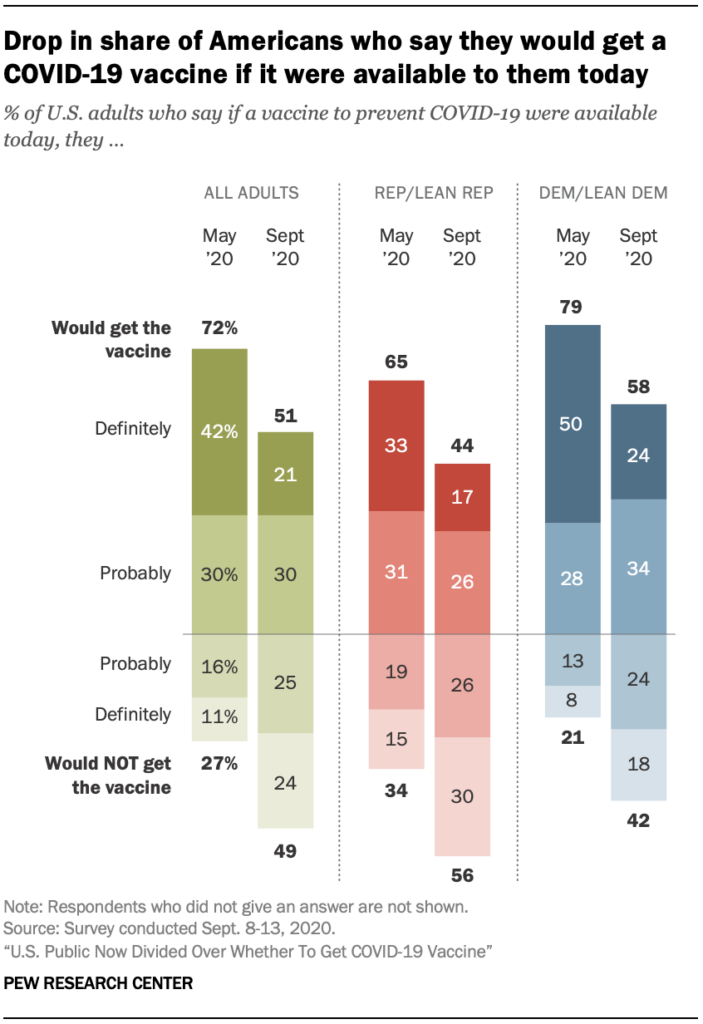
I am concerned that we could be beginning to see the beginning of a Labor Day or fall surge, as new cases are slightly increasing and test positivity is rising in over half of the states. We must remain vigilant in these critical few weeks, as our leaders will not. The president does not care about American lives. For him it’s just the “red” and “blue” states. “If you take the blue states out,” he said this week, “we’re at a level that I don’t think anybody in the world would be at. We’re really at a very low level.” Ignoring for a moment the insensitivity and criminality of this comment, if the “red” states in America were a country, it would be 3rd in the world for Covid-19 deaths (92,273), behind the U.S. and Brazil. There have been 104,811 deaths in the “blue” states.
Let’s move on to our discussion of higher education.
Higher education
Each Friday I update the College Watchlist, which is currently tracking 74,275 total cases at 84 colleges. 12,891 (17.3%) of those were recorded in the last 7 days. While some schools have been able to bring their case numbers down, we are seeing dangerous spikes in others, such as the University of Virginia and CU Boulder. At the top of the list for cases in the last 7 days are:
- University of Arizona – 934
- University of Wisconsin-Madison – 795
- University of Florida – 607
- Ohio State University – 582
- Indiana University – 520
Three out of these five were in the top five last week.
By the far the biggest development in the higher education sphere this week was the Big Ten’s decision to resume a fall schedule. While the league’s commissioners have said there was no political pressure in the decision to resume, it has been reported that the White House offered testing to the league and President Trump used the news to his benefit at his rallies this week. Players will be tested with rapid antigen tests daily, and there are protocols in place for suspensions if teams reach a threshold of test possibility. If a player contracts the disease, he will sit out for 21 days and undergo a cardiac evaluation. While I would generally support the resumption of sports, I take issue with equity and access to testing. While athletes are tested daily, students at the same schools have trouble accessing tests, even if they are symptomatic. “If how we handled COVID on campus more generally reflected or was more similar to how universities handled it with athletes and with the athletic department, then I would really have no problem with it,” one UMich student told my colleague Aria Gerson in USA Today. “My threshold is straightforward: everyone who is on a college campus needs to have access to the same level of testing as those participating in an extracurricular activity,” higher ed scholar Robert Kelchen wrote. We could have had daily rapid testing for schools to educate our next generation. We could have had rapid testing at colleges to ensure that our communities are safe. We could have rushed rapid testing to workplaces to get the economy running. But what do we do? Play football. It’s not like the areas around the Big Ten universities have little virus transmission, either. As of the middle of this week, there have been more cases at the 14 Big Ten universities (13,054) than the entire country of Norway (12,431). In the last 7 days, the Big Ten has recorded more cases (3,973) than the entire country of Aruba (3,328) since the pandemic began.
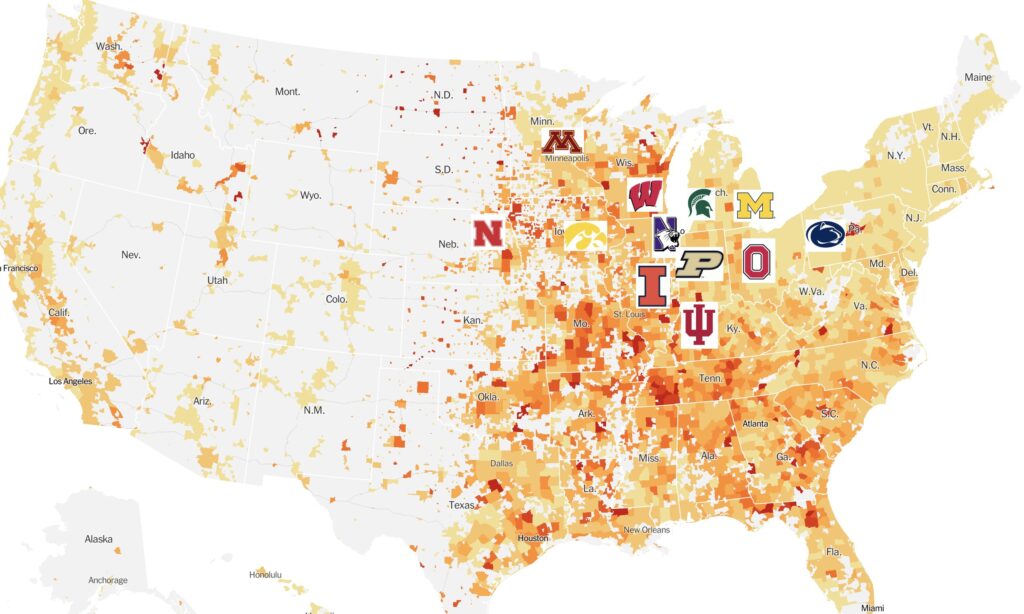
It is not just the Big Ten. Last weekend, the University of Texas hosted a football game with a reduced capacity of 15,000 fans, according to reporting by my colleague Sami Sparber in the Texas Tribune. Officials tested students with season tickets the day before the game and 95 out of 1,103 tested positive, for a 7.9% positivity rate. While these individuals did not attend the game, it is striking how much virus there is in the community if such a small sample tested positive. It is quite likely that individuals infected with Covid-19 attended the game and went undetected. In Oklahoma, the University of Oklahoma’s football team went on with its game against Missouri State despite 29 players in quarantine and isolation.
Each week, we take a moment to acknowledge the wacky, stupid and downright dumb elements of colleges’ reopening plans, also known as the College RidicuList.
- The University of Georgia was widely criticized for allowing football, but not early voting, on campus this fall, saying the university was unable to find a suitable location (Narrator: Use the football field!). A day later, the university reversed this decision.
- Louisiana State University says students who get a Covid-19 test will have priority for football tickets.
- Chicago Police threw a maskless gathering with pizza in a DePaul University classroom.
- Some students at the University of Tennessee have agreed to get tested for the virus outside of Knox County in an attempt to avoid university isolation and quarantine rules. Trust in the institution has been eroded.
- West Virginia University President E. Gordon Gee has apologized following the release of photos depicting him shopping in a local business without a mask on.
- LSU coach Ed Orgeron believes most of the LSU football team has already caught Covid-19, so he says “hopefully they do not catch it again.”
- Graduate students at the University of Michigan ended an eight-day strike with a parody of the school’s fight song: “Hail, quarantine dysfunction, hail to your court injunction…”
- College Republicans at the University of Central Florida took to social media to call UCF’s targeting of the Greek community disturbing and hypocritical.
Here are some samples from op-eds and editorials in student newspapers this week, which are always useful for capturing perspectives from students, faculty, staff and local community members.
- “It is critical that the Tufts community and administration account for the concerns of our neighbors in making on-campus decisions,” editors at The Tufts Daily write. “Our Tufts community must recognize that our campus is not a bubble.”
- “I am pretty frustrated with the university’s efforts — I really wish that all instruction was online,” one University of Iowa student said about access to testing.
- “The school isn’t telling anyone to get tested, but I’ve had like eight people I’ve been in contact with that I could have infected,” one Penn State University student said. “It’s disappointing…they say they’re doing all these things. It’s just not true because I’m living it, I’m seeing it, and it’s simply not true.”
- “The biggest challenge I faced during quarantine was loneliness and anxiety…I urge everyone to realize that being in our friends’ presence and enjoying the beautiful scenery on our campus is a privilege,” a student at Middlebury College, the school’s 2nd Covid-19 case, writes.
- “It is not only in the interest of the public good and public health, but also in the interest of your own future freedom. Your friends, professors, and, frankly, the world are all watching,” editors at the Harvard Crimson write after reports of students partying on campus.
While much of these weekly newsletters focus on the schools that have experienced major outbreaks, it is important to realize that many schools are actually doing quite well at controlling the virus. We usually give schools in the South flak for their high case numbers. But Wake Forest, among others, has been able to keep its case numbers low by ordering students to quarantine before arrival, testing them all and then conducting a random sampling testing program. The school has recorded 95 cumulative cases since August 17. It’s not rocket science! Over the coming months, we will conduct further analysis into the factors that help control viral spread, including each school’s testing policies, school size and rates of community transmission.
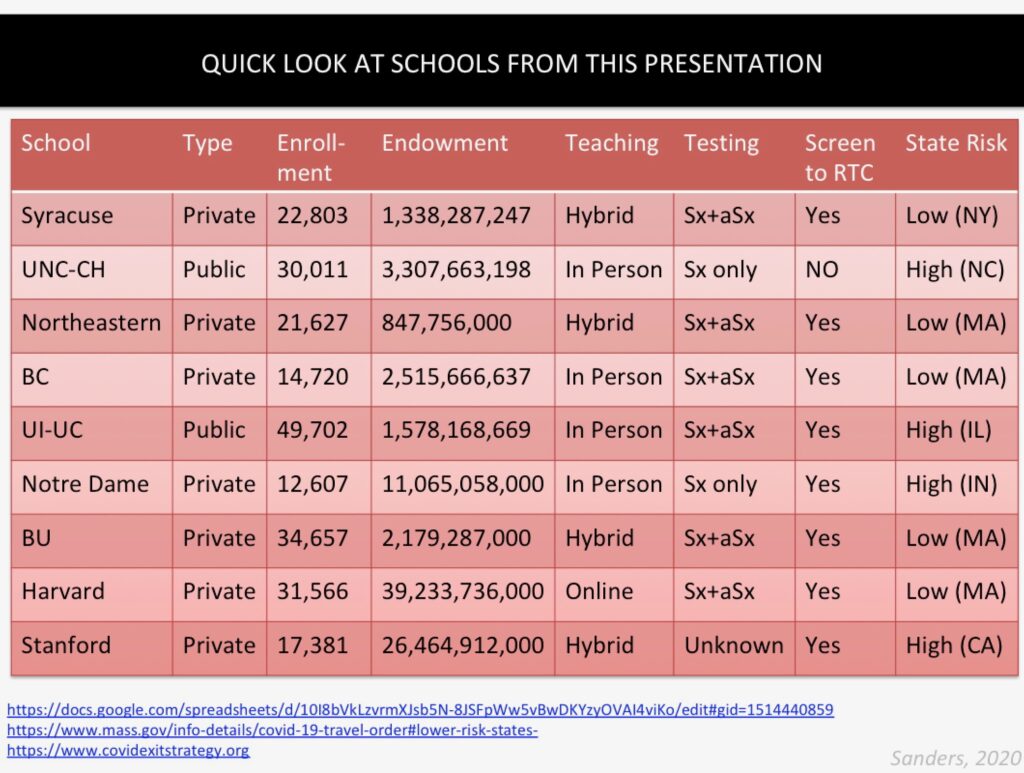
Going forward, we will continue to watch three main elements in particular:
- The efficacy of “pauses” or campus quarantines to control outbreaks.
- The transparency (or lack thereof) that colleges promote on their dashboards.
- New hotspots. While we examined Iowa a few weeks ago, it appears Utah and Michigan’s college towns are now seeing increased viral transmission rates.
The Good Stuff
Let’s roll the clips of the good stuff. In my usual tradition, I feature my favorite stories from the week. Here are my Top 12.
- The New York Times published a series of beautiful profiles of Brooklyn hospital workers.
- Elemental, Medium’s health and wellness publication, published a list of 50 fantastic experts to follow for Covid-19 information and insights.
- Actor Paul Rudd convinces the younger generation to wear a mask as part of a New York State ad campaign.
- College journalists have been vital to transparency and newsgathering on their respective campuses.
- Youth organizers tackle voter engagement online through social media and video calls amid a pandemic.
- “The world has never felt smaller,” one person said to The New York Times in its list of six-word poetry memoirs about the pandemic.
- Astronomers on Earth have discovered signs of what might be life on Venus.
- Chefs around the world have joined together in a kitchen garden project.
- Martha Stewart seems to be doing just fine in quarantine with her new CBD pâte de fruit.
- New climate maps published by ProPublica showed a transformed United States.
- “Since March, my life has become less about managing expectations and more about not knowing what to expect at all,” my colleague Isabella Simonetti writes in a piece in The Philadelphia Inquirer about dialing back personal expectations during a pandemic. “While I loathe uncertainty, I’ve found comfort in taking a step back, being grateful for what I have.”
- Vermont’s health commissioner Dr. Mark Levine has filled the national spotlight, representing a state that has been lauded by Dr. Anthony Fauci as achieving high levels of success in controlling the virus.
Conclusion
This week was one of the darkest weeks in the history of American public health. Tensions ignited by the president have caused the degradation and loss of trust in many of America’s public health agencies, trust that will take years to repair. The president has continued to stand in the way of science, issuing false statements on the virus and presenting vaccine timelines that are completely unrealistic. As cases could rise in the coming weeks, and have shown early indications of doing so, we need to let the science and the scientists speak. Since the president will not do that, we must use our own voices as Americans.
I’d like to thank all the student journalists with whom I have the pleasure of working. In the next weeks and months ahead, they will become vital in chronicling their colleges’ paths forward for the fall and beyond. Support their work by reading it.
My best to all for good health.
Like what you see? Don’t like what you see? Want to see more of something? Want to see less of something? Let me know in the comments. And don’t forget to subscribe to the weekly newsletter!
For more instant updates, follow me on Twitter @bhrenton.

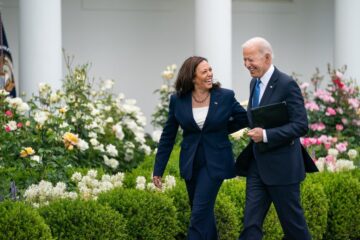

1 Comment
Where We Stand with Covid-19 — September 25 - Off the Silk Road · September 26, 2020 at 11:35 pm
[…] Last week, we unpacked the darkest week in the history of American public health as President Trump continues to sideline the science and more Americans will lose their lives as a result. This week, we will look at the first signs of a fall surge and present a new framework for keeping track of outbreaks in America’s college towns. […]
Comments are closed.